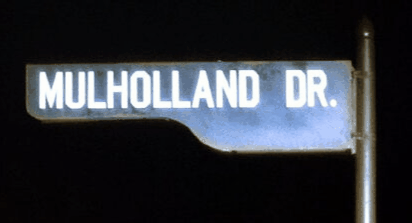Contemporary French art appears to be on the threshold of crisis, rudely awakened from bureaucratic slumber by the Right who, encouraging debate on museum privatisation, seek to revoke massive increases in state funding introduced in 1982. These attacks on cultural statism threaten French endorsement of the Euro Kunsthallen model, and may shift emphasis away from neo-conceptual practices. Additionally, Nicolas Bourriaud perceives a waning of critical spirit in French culture. Committed to the work of emerging artists, Bourriaud’s dressed-down Palais de Tokyo Site de Création Contemporaine may serve as a corrective. Equally, it could exasperate the problem by pampering the few peripheral French art practices that circumvent €urokunst. Siting an ‘alternative’ space in the 16th arrondissement is not an ironic gesture in the face of horizontal cultural coordination. To make matters worse, the Palais de Tokyo has been parading Parisian squat art; an alternative scene that has little to offer other than misplaced hippie sentiment and attendant expressionist relativism. Despite its faults, the inclusive approach of the Palais de Tokyo does at least suggest that ‘international profile’ can no longer be the only desirable cultural aspiration.
As such, the Musée d’Art Moderne’s concurrent solo exhibitions of Bertrand Lavier and Phillipe Parreno may amount to nothing more than nostalgia; Lavier being a major French figure of the 80s and Parreno, of the 90s. Lavier engages with the intersection between museological endgames and consumer culture. His concerns may be semiotic, but his work is primarily ironic and parasitic rather than erudite. Composition rouge, verte et jaune (1989) looks like a hard-edged abstract painting, but turns out to be a section of wooden sports floor. The semiotic implications of allegedly pure signifiers are probed only for the hollow applause of the converted. Such works are the cultural products of an 80s France that understood the role of museums. Knowing his place, Lavier found these desublimating puns endlessly amusing. A series of Relief-Peintures (1987-91) are constructed from portions of brightly coloured prefabricated building façades; Lothar (1999) is a pylon snapped off by France’s 1999 hurricane painted silver to resemble a Modernist steel sculpture. Only when Lavier leaves literalism and uncooked juxtapositions behind do his museological musings become worthwhile. Walt Disney Productions 1947-1984 – an arrangement of paintings and sculptures based on a cartoon of Mickey Mouse’s visit to a Modern art gallery – works on the level of the pun certainly, but it has awesome psychological force. This realisation of a virtual space is truly nauseating; green and yellow walls enclose bright biomorphic polyester resin sculptures, mobiles and silvery abstract cartoon cibachromes. Lavier’s recent cibachromes, Harcourt/Grévin (2002) unite the glamorous chiaroscuro developed by Harcourt photography studio in the 1930s with the gauche celebrity of the Musée Grévin wax museum. Taste apart, Harcourt and Grévin are equally accomplished mythologisers of Parisian cliché. By photographing waxworks of contemporary figures such as Vladimir Putin and Arnold Schwarzenegger in the now unfashionable Harcourt style, Lavier not only mocks the epochal pretensions of such individuals, but pricks at the heart of representation’s canonising power. More pressingly, Lavier prophesises the avaricious populism that we might expect if French museums are privatised.
Parreno, like Lavier, is respectful of the institution, taking just as great care to produce an exhibition grandiose in aspiration and solemn in tone. Parreno is also drawn to discordance and conflation. The opening work of the exhibition, his short 35mm time-lapse film of growing Norwegian vegetation El sueño de una cosa (2002), is projected onto a Robert Rauschenberg White Painting (1951) every 4 min.33 Secs. (John Cage, 1952). The long painful wait through Cage’s music while staring at Rauschenberg’s equally uneventful monochrome is finally rewarded with breakneck rendition of genesis. Parreno here appropriates time and space rather than material culture, he does not use objects but memories, collective hallucinations, ‘the dream of a thing.’ In this way he avoids Lavier’s cynicism, circumventing vulgar materialist questions that museological art tends to raise verbatim, focusing instead on the structures of feeling that permeate culture as a whole. Parreno’s vision of the world is more nuanced, fragmented and estranged since he has faith in the ability of the imagination and our biochemical selves to reconstruct semiotic and spatial relationships. Alien Seasons (2002) a video projection of a cuttlefish camouflaging itself by changing colour to match its surroundings can be read as a metaphor for the means of subterfuge by which Parreno leads his audience into an alien environment constructed according to his wishes. The show’s final work Crédits (1999), extends this metaphor to a false dénouement. A collection of coloured plastic bags hang from a tree planted in waste ground near a 1970s housing project. The luminous bags filmed under relentlessly changing lighting conditions, flutter in the wind and rain to the accompaniment of electric guitar by ACDC’s Angus Young. The sound, lighting and mise-en-scène continuously alter our reading of the video: extra-terrestrial, utopian, haunted, grunge, dystopian, stage-set, children’s game. Blaming the government for France’s allegedly low international profile may not be the solution, for such exhibitions, like life, are movies without cameras, and such movies have no directors.
Neil Mulholland, Edinburgh, October 2002
Bertrand Lavier, Musée d’Art Moderne de la Ville de Paris, 31st May – 22nd September 2002; Philippe Parreno, Alien Seasons, Musée d’Art Moderne de la Ville de Paris, 31st May – 15th September 2002.
Bertrand Lavier, Musée d’Art Moderne de la Ville de Paris, 31st May – 22nd September 2002; Philippe Parreno, Alien Seasons, Musée d’Art Moderne de la Ville de Paris, 31st May – 15th September 2002. / by Kneel, Mulholland: Drive! is licensed under a Creative Commons Attribution-NonCommercial-NoDerivatives CC BY-NC-ND 4.0


